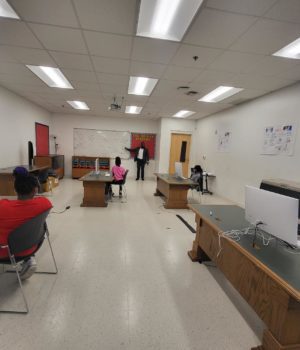
Diverse-by-Design Charter Schools are Making a Difference
Prioritizing diversity as a core value of a charter school tends to improve behavioral and academic outcomes for students, according to a new study from a team at Teachers College with Columbia University headed by Professor Priscilla Wohlstetter. “Moving the Needle on Desegregation: Performance Outcomes and Implementation Lessons from Diverse-by-Design Charter Schools” analyzed “diverse-by-design charters” in three states: California, Colorado and New York. These schools use various methods to attract students across race, ethnicity, income and ability. The study found that intentionally diverse schools “tend to have lower dropout rates, increased achievement in English Language Arts and graduation rates, and positive relations between groups of students.” Traditionally, charter school students—like their public school peers—are “more often surrounded by others of their own race, ethnicity, and socioeconomic status.” But with diverse-by-design schools, there is an opportunity to learn lessons from increased integration between students of different backgrounds that may be applicable to public education writ large.
Diverse-by-design schools are members of the Diverse Charter Schools Coalition and were founded in part to counter the growing segregation in America’s public schools. A diverse-by-design charter school is defined as having low-income students make up 30-70% of the student body and having no one race or ethnicity make up more than 70% of the school. The study found that diverse-by-design charters, when compared to nearby district schools, tend to be more racially and socioeconomically diverse. The study also found that these specialty charter schools have lower chronic absenteeism and suspension rates, particularly for students of color. Academic outcomes for diverse-by-design schools are mixed; however, the charters excel in English language arts over peers and diverse-by-design highschools have better graduation rates for students of color. This may be the result of the strategies they employ.
Diverse-by-design schools use practices that seek to create and engage with the community, use less exclusionary discipline practices, and teach with a culturally responsive pedagogy. According to the researchers, diverse-by-design charters almost always include diversity in their mission statement. They also usually include family and community engagement, emphasize acts of service and making a positive impact on the world. Traditionally, exclusionary discipline falls disproportionately upon students of color. The study highlighted that many diverse-by-design schools are eschewing exclusionary discipline practices like expulsions and suspensions in lieu of restorative justice techniques for discipline. Restorative justice keeps students within the school community and emphasizes that school culture is the responsibility of the collective. Restorative justice seeks to repair harm done by having all parties decide together how the injustice should be repaired.
Another technique many schools in the study use is culturally responsive pedagogy. This involves the school proactively addressing identity and bias in the curriculum and its professionals. Culturally relevant teachers utilize a student’s culture as a vehicle for learning, according to Professor Gloria Ladson-Billings. One school the study focused on – Community Roots – does this by creating spaces for children to have “tough conversations about power, privilege, skin color, and gender— even with kindergartners.”
The diverse-by-design charter schools in the study were examined in comparison to traditional public schools and other charters within their respective local school districts. Diverse-by-design schools are acting on the body of research that shows how important diversity is for student success in schools, but also for a more integrated society. By making diversity a priority, diverse-by-design charters are reversing the trend of public schools becoming more segregated. This priority tends to improve outcomes for all students, but especially students of color. The study stressed that more research is needed to determine how other public and charter schools can learn from diverse-by-design schools.



